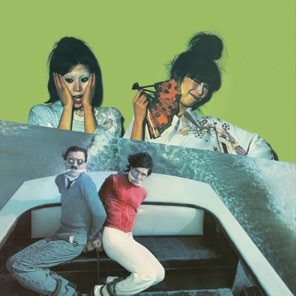
MICHAEL PUTLAND/GETTY
All but ignored at home in the US after two low-selling albums, Ron and Russell Mael relocated from California to London in 1973, buoyed by the promise of a deal with Island Records, who were smart enough to see their potential. Being devout Anglophiles helped too; the brothers loved The Kinks, The Who, 60s Floyd and The Move, and tapped up Roy Wood to produce their first album for their new label, Kimono My House.
Wood never happened, but Island’s in-house producer Muff Winwood proved a worthy replacement. The brothers were allowed free rein the studio, backed by a new, all-English iteration of Sparks: bassist Martin Gordon, guitarist Adrian Fisher and drummer Norman ‘Dinky’ Diamond. The dizzying Kimono My House - a pun on Rosemary Clooney’s early-50s ditty Come On-A My House - remains a magnificent showcase for the Maels’ theatrical art-pop songs about weird science, tragi-comic suicide pacts and love gone askew, packed with lyrical wit and seditious humour. Plus they had the look; Sparks’ Top Of The Pops debut, performing This Town Ain’t Big Enough For Both Of Us, is still vivid in the memory of people of a certain age: Ron at his keyboard, with sinister stare and Hitler moustache, while pretty boy Russell tears it up and yelps falsetto.
The song went Top 10, as did the equally fabulous Amateur Hour, turning Sparks into commercial gold. Their across-the-board appeal - besieged by screaming teens, adored by ‘serious’ music fans – resulted in sellout tours and super-quick follow-up, Propaganda. Issued in November ’74, the album confirmed the Maels’ status as fresh princes of post-glam, experimenting freely with rhythm, melody and meter in a way that managed to be both cerebral and thrilling accessible, from Something For The Girl With Everything to Never Turn Your Back On Mother Earth and beyond.